
Viltrox AF 20mm F2.8 Z Review
I have found it interesting to revisit certain lenses as mounts like Nikon’s Z-mount have started to open up to third party development. It’s interesting to see just how well these lenses translate onto a new platform. My very first review on my new Nikon Z8 body this spring was of another Viltrox full frame lens – the more premium Viltrox AF 16mm F1.8 lens. I really love that lens, though at 110mm long and 550g, it isn’t particularly small. So what if you want to travel small and light instead? That’s where the second Viltrox wide angle option comes into the play, as the Viltrox AF 20mm F2.8 Z is very small (about 60mm long) and light (only 173g). It’s also inexpensive, with a price tag of just $175 USD. So does the Viltrox 20Z make sense for Nikon Z-mount cameras? Dive into either the text or videos and find out!
Follow Me @ YouTube | Patreon | Instagram | Facebook | DA Merchandise | Flickr | 500px | X
__________________________________________________________________________________________________
Thanks to Viltrox for sending me a review copy of this lens. As always, this is a completely independent review. All opinions and conclusions are my own. *The tests and most of the photos that I share as a part of my review cycle have been done with the 45MP Nikon Z8, which I reviewed here.
__________________________________________________________________________________________________
I have previously done a full review of the Viltrox AF 20mm F2.8 on Sony E-mount, which you can visit here. I’ve even done a travel video with that lens, which you can see here:
So rather than being a completely new video, this is more of an updated review that looks at the subtle changes to build, autofocus, and optical performance that we find on Nikon rather than Sony. While the Viltrox 20Z retains one difficult flaw here on Nikon, it also produces images that I tend to really like.

I took that image in the woods on a hike in the Blue Mountain region of Ontario, and I mention that because the Viltrox continues to excel as a great hiking/travel wide angle, as it is very light, has a great focal length, and delivers images that look great.

20mm is in the sweet spot for landscape type photography on full frame, with an angle of view of 91.6°. It allows you to get beautiful, dynamic images that really pop.

I would call the Viltrox AF 20mm F2.8 Z one of the best wide angle options currently available if you want to travel light. Why? Let’s dive into the details together and discover the reasons.
Build and Handling
Many of the recent Viltrox lenses have a metal, more hefty feel to them, but the Viltrox AF 20mm embraces a more conventional, lightweight design in polycarbonates (engineered plastics). The very first Viltrox lens I reviewed was a manual focus 20mm F1.8 lens, and that lens weighed in at a whopping 775g, or 618g heavier than this new lens. The new AF 20mm is a completely different kind of lens, only 68mm in diameter (2.67″) and 60.8mm in length (2.3″). It weighs only 173g (6.1oz). That’s a little bigger in every dimension from the E-mount version, largely because the Z mount version has a much wider flange near the lens mount to accommodate the much larger diameter (55mm) of the Z-mount vs the E-mount (which is 46mm). This does change the overall diameter of the lens a bit since this is actually the widest point of the lens. That also makes the lens a bit heavier (+16g). You can see that the lens profile looks a bit different. in the comparison of the two here.

I mentioned the 16mm F1.8, and it dwarfs the 20mm F2.8 (and the Nikon 20mm F1.8 S is longer still!)

Up front we have a 52mm filter thread, which is a small but relatively common filter size. The front of the lens fascia has a variety of information imprinted on it and has a classic profile. You’ll want to stick to slim filters to avoid adding any additional vignette, which is already very heavy on the Nikon version.

There is a very slim lens hood included that bayonets into place but without as much precision and confidence as I would like. It doesn’t feel like it really “clicks” into place and locks in the right position. A lens pouch is also included. The pouch doesn’t add a lot of protection value, but, like the hood, at least it is included. There are many more expensive lenses that include neither a pouch or a hood.

There is no aperture ring or switches on the barrel. The only feature on the lens barrel is a wide manual focus ring. The manual focus ring has a nice amount of damping and moves smoothly. All typical manual focus aids on your Nikon camera will work with the Viltrox.

The Viltrox AF 20mm employs a lower blade count in the aperture iris with 7 blades. I like a higher blade count on many lenses, but sometimes a lower blade count on a wide angle lens works better to produce cleaner sunstars.
The Viltrox AF 20mm is somewhat stuck in between, however, as the lower blade count keeps the aperture from being completely circular when stopped down, but I also don’t find the 14 pointed sunstars to have incredible definition (points to the rays).
We have an important Viltrox standard in the form a USB-C port on the metal lens mount that allows you to connect the lens to a computer and update the firmware directly. Viltrox’s firmware update process is very simple and easy.

Viltrox lenses have traditionally had a fairly poor minimum focus distance and maximum magnification standard, but fortunately that is starting to change. The Viltrox AF 20Z has a minimum focus distance of 19cm and a respectable maximum magnification of 0.17x.

Before 2024 I had never seen a Viltrox with a magnification figure higher than 0.10x, so 0.17x sounds like a win. It’s enough to get close to a subject and blur out the background a bit.

While some Viltrox lenses have started to come with weather sealing, this inexpensive 20Z lens does not have it. It does have a HD Nano multilayer coating with water-resistant and antifouling coating on the front element.

Here on Nikon there really aren’t a lot of rivals for this lens, so it really fills a niche. Nikon’s own closest competitor is the Nikkor Z 20mm F1.8 S, but that lens costs 6x as much, is nearly twice as long, and weighs 325g more. It’s not really a competitor at all other than having the same focal length. That makes the Viltrox an inexpensive, stripped down lens that will serve a different kind of audience. The lens is light but doesn’t feel cheap or flimsy. There are no bells and whistles here, but that’s okay at this price point.
Viltrox AF 20mm F2.8 STM Autofocus
The Viltrox AF 20mm STM utilizes a stepping focus motor (STM) that makes fast, quiet focus changes. Focus felt silent unless I put my ear up next to the barrel, where I could hear some very light whirring during major focus changes. When doing focus speed tests, I could feel inertia shifting in the lens, but there wasn’t anything to hear. I had no problem locking quickly on to subjects near or far.

Unlike when I compare lenses across, say, Sony and Fuji, where there is a huge difference in autofocus performance, there really isn’t much of a difference between autofocus on my Nikon Z8 and what I would see on my Sony a7RV or Alpha 1. There wasn’t really any area that felt all that different.
I did a focus speed tests both indoors and outdoors and was generally impressed with focus speed and the confidence of focus acquisitions. Focus speed was nice and quick; not quite instant, but with no obvious lag between near and distance subjects. I did notice a bit of micropulses, so I’m not sure focus lock is always quite as confident as on Sony, but neither did I notice any issues in real world shooting.

I got accurate focus when faces were in the frame, though, to be fair, depth of field is already so large at even 6 feet that it would be hard for them to not be in focus.

The same attributes apply to video AF. Autofocus continues to be silent during video focus pulls and pulls are quick, but not always as confident as I would like. I definitely saw some of those micropulses at times as focus didn’t seem to full lock and settle, even though it had reached the proper focus point. There is a fairly small amount of focus breathing that shouldn’t prove a problem for video shooters.
My hand test where I alternately block the view of my face with my hand and then remove it went reasonably well, though the lens is set up for more smooth and controlled focus changes, so the transitions from my hand to my face and vice versa weren’t always reactive.
On a more positive note, I shot a number of video clips with the 20Z and my Z8 of my wife’s new vehicle for a review of it, and focus was stable in those shots.
This will a solid lens for either gimbal work or vlogging. It’s very lightweight, allowing for a wider variety of gimbals to be used. I did a quick vlogging test and focus had no problem staying locked on my eye as I moved along or spun around. Here’s a screenshot from a vlogging sequence:

Other than a little less confidence in some of my tests, I felt that autofocus was roughly on par with what I saw on Sony. In real world situations, focus was flawless: quick, quiet, and accurate. You really can’t ask for much more than that from such an inexpensive lens.
Image Quality Breakdown
The Viltrox AF 20mm sports an optical formula with 10 elements in 8 groups. This includes 2 ED lenses, 1 HR element, and 2 aspherical elements. The MTF chart suggests good but not exceptional center sharpness with a steady decline towards the edges wide open and with a nice uptick in sharpness when stopped down.
I felt like real world results were stronger than what the MTF suggests, though with one significant caveat that I’ll detail in just a moment. Real world results looked sharp and detailed across most of the frame with a bit of a dip in the corners.



We’ll work through the chart results by first looking at distortion and vignette. The latter tends to be the one area that varies between Sony and Nikon versions. There’s not a lot of distortion here, though what does exist is fairly complex. You essentially can’t correct it one direction without creating some distortion in another. For example, if I treat the distortion as pincushion distortion (a -2 correction in Lightroom’s Distortion slider), I can get the outside rectangle as close to straight as possible, but this comes at the cost of creating a bit of bulge in the inner lines, however. Alternatively, I can work at getting the inner lines as straight as possible by correcting for barrel distortion (a +3 correction). This has the negative effect of really exaggerating the distortion in the corners, however.

Bottom line is that the actual correction profile will work best. Thankfully the quantity of distortion is quite low, and that means that you can mostly get away with leaving it uncorrected.
So far I’ve always seen more vignette on Z-mount versions of lenses also available in E-mount. On Sony, I used a +78 to correct the vignette, whereas on Nikon I had to max out the slider. There’s at least four stops of vignette in the far corners. You are probably more likely to see uncorrected vignette than you are distortion in real world images. This image has not received correction for either:

At this point, Viltrox lenses aren’t receiving correction in camera for JPEGs or video. I mostly shoot RAW images, so I don’t think about it much, but those of you who typically rely on in-camera corrections and shoot JPEG are going to be disappointed here. My hope that is Viltrox gets to a place where they get more support and their lenses get in-camera corrections.
The 20mm F2.8 showed relatively low amounts of longitudinal chromatic aberrations. I saw very minimal amounts of fringing here.

That’s not really unusual for a wide angle lens with only a moderately large maximum aperture, but it does happen. Not having an issue with that allows you to shoot in high contrast situations without worrying about fringing.
Lateral Chromatic Aberrations usually show up along the edges of the frame as fringing on either side of high contrast areas (like bare branches framed at the edge of images), but that doesn’t seem to be an issue here. You can see a nice, neutral transition from black to white on the corners of my test chart.

That’s an area of strength, as many inexpensive wide angle lenses really suffer from fringing in the corners.
So how about resolution and contrast? All chart tests done with a Nikon Z8 (45MP) using a tripod and a two second timer. Here’s a look at my test chart:

And here are the crops (at roughly 200% magnification) from the center, mid-frame, and extreme corner at F2.8:



The center looks excellent, with high acuity (a word I use to describe resolving fine details) and strong contrast. The midframe looks very good as well, and while the corners are considerably softer than the center, they don’t look as bad relatively as what I saw on Sony.
Because I saw such poor performance in the corners on Sony, I proactively did a second test where I focused in the corner on my Nikon test, and there’s a pretty obvious improvement in the corners when focused there:

This points to something called “field curvature”, where the plane of focus isn’t flat or consistent. The biggest challenge at the distance of my test chart is that if you focus in the corners, the center isn’t as sharp. In the case of the Z-mount version, however, neither shift was as extreme.

That being said, I did notice that the corners in real world images were never as sharp as the center 2/3rds of the image, and that’s a bit more exaggerated when shooting at F2.8.
Here’s a real world landscape at F2.8, and you can definitely see that the edge is a fair bit softer than the center:



You can see from this comparison that the edges do improve considerably, but are never pin sharp. Here’s an F5.6 comparison:

Real world corner sharpness is one of my least favorite aspects of the lens, though the truth of the matter is that I’ve seen much worse results from much more expensive lenses. I did see good centering with roughly equal results in all four corners of the image.
Stopping down to F4 showed an uptick in contrast and (to a lesser extent) resolution. You can see from this comparison in the midframe that contrast has significantly improved.

There’s a little bit more on tap if we stop on down to F5.6:

Peak performance for consistency across the frame on my Z8 comes at F8, which looks really strong across the frame. I would choose F8 as an optimal landscape aperture.

After F8, diffraction will start to soften the image, though the effect isn’t as pronounced as on some lenses. The lens is softest at F16 (minimum aperture), but not much more so than F2.8.

This inexpensive lens makes for a nice landscape lens. It’s a great focal length, and the light weight makes it a breeze to bring along as a compliment to something longer. I found that I tended to really like the overall “look” of images from the lens, which is surprising in a lens so inexpensive.

Color is subjective to some degree, but I didn’t notice anything unusual or off about the color rendering. It seemed reasonably neutral to me – neither garish or flat. Greens seemed very nicely saturated in these images, but that was accurate to the scene.

Skin tones seemed accurate in shots with people in them:

Overall I found that colors seemed accurate and I was generally happy with the images that I got during my review period.
Flare resistance was fairly good but not exceptionally good. At all tested apertures contrast stayed good, but there is a flare/ghosting pattern that is faint at F2.8 but becomes more defined when the lens is stopped down. Overall I would say that results are fairly good for such an inexpensive lens.



Bottom line is that the portability of the Viltrox 20Z combined with the fact that you can make some pretty great looking images with it makes this lens a great pick to bring along when hiking or traveling.

I personally find the combination of light weight, low price, and this optical performance to be a pretty compelling package. This lens feels as compelling as many lenses that I’ve reviewed costing 2-3 times as much. You can see more beautiful images by visiting the image gallery here.
Conclusion
The Viltrox AF 20mm F2.8 Z is a surprisingly interesting lens, and I feel like it fills a real void on Nikon. The fact that Z mount has only recently opened up to third party development means that, unlike Sony, there is a lot of gaps in the lineup. There just really isn’t much other options in terms of cheap, light wide angle lenses, and the Viltrox provides a surprisingly high performing little optic.

This is a great focal length for a lot of different applications, and I found it an easy lens to throw into the bag and bring along for a wider perspective. I suspect that it will stick around in my own Nikon kit for the times I want to travel with a longer focal length but want to augment my options with a wide angle lens.

Undoubtedly we will see more alternatives in the future as more and more third party lensmakers develop for Z-mount, but at the moment the Viltrox 20Z pretty much stands alone. In many ways, however, this will be a hard lens to top, because it really is quite excellent for the $175 price tag. Happy shooting!

Pros:
- Lightweight, compact design
- Well executed, smooth manual focus ring
- USB-C port for firmware updates
- Quick and quiet autofocus
- Good focus accuracy
- Good center and midframe sharpness wide open
- Excellent sharpness across most of the the frame when stopped down
- Fairly low distortion
- Good color rendering
- Fantastic price to performance ratio
- Fills a serious need on Nikon
Cons:
- Corners always lag a bit behind the rest of the frame
- Strong vignette
- Distortion pattern a little complex
- Some instability in video autofocus at times
_________________________________________________________________________
GEAR USED:
Purchase the Viltrox AF 20mm F2.8 @ Viltrox | B&H Photo | Adorama | Amazon | Amazon Canada | Amazon UK | Amazon Germany | Pergear
_______________________________________________________________
Purchase the Nikon Z8 @ B&H Photo | Adorama | Amazon | Camera Canada | Amazon Canada | Amazon UK | Amazon Germany
_________________________________________________________________
Want to support this channel? Use these affiliate links to shop at: B&H Photo | Amazon | Adorama | Camera Canada | Amazon Canada | Amazon UK | Ebay | Make a donation via Paypal
Buy DA Merchandise https://bit.ly/TWIMerch

Keywords: Viltrox, Viltrox AF, Viltrox 20mm, Viltrox 20mm F2.8, 20mm, F2.8, STM, AF, #viltrox, Nikon, Nikon Z8, Z, Z-mount, Z8, Review, mirrorless, Full Frame, Sports, Tracking, Dustin Abbott, Real World, Comparison, Handling, Focus, Portraits, Resolution, High ISO, Image Quality, Sample Images, Photography, 45MP, #letthelightin, #DA, #NIKON, #Z8, #NIKONZ8


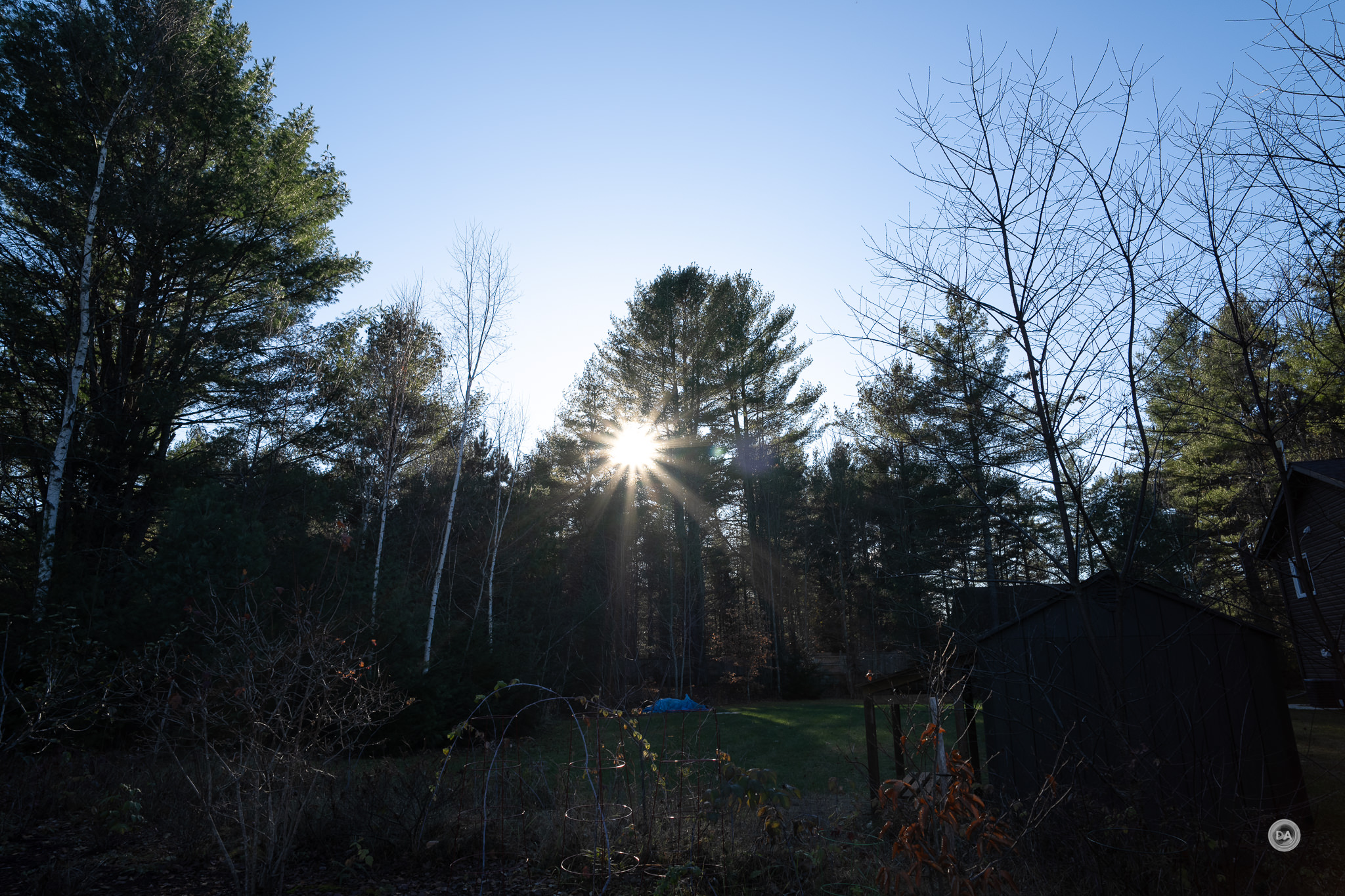
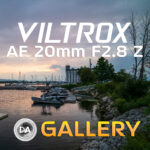
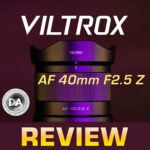


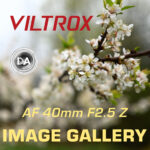
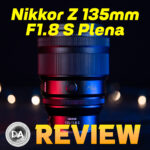




[…] compact lenses for Nikon Z, from Nikon’s own Nikkor Z 40mm F2 to really compact lenses like the Viltrox 20mm F2.8 and the even smaller 28mm F4.5 “Chip”. It’s kind of a waste to throw a 70g lens like the 28mm […]